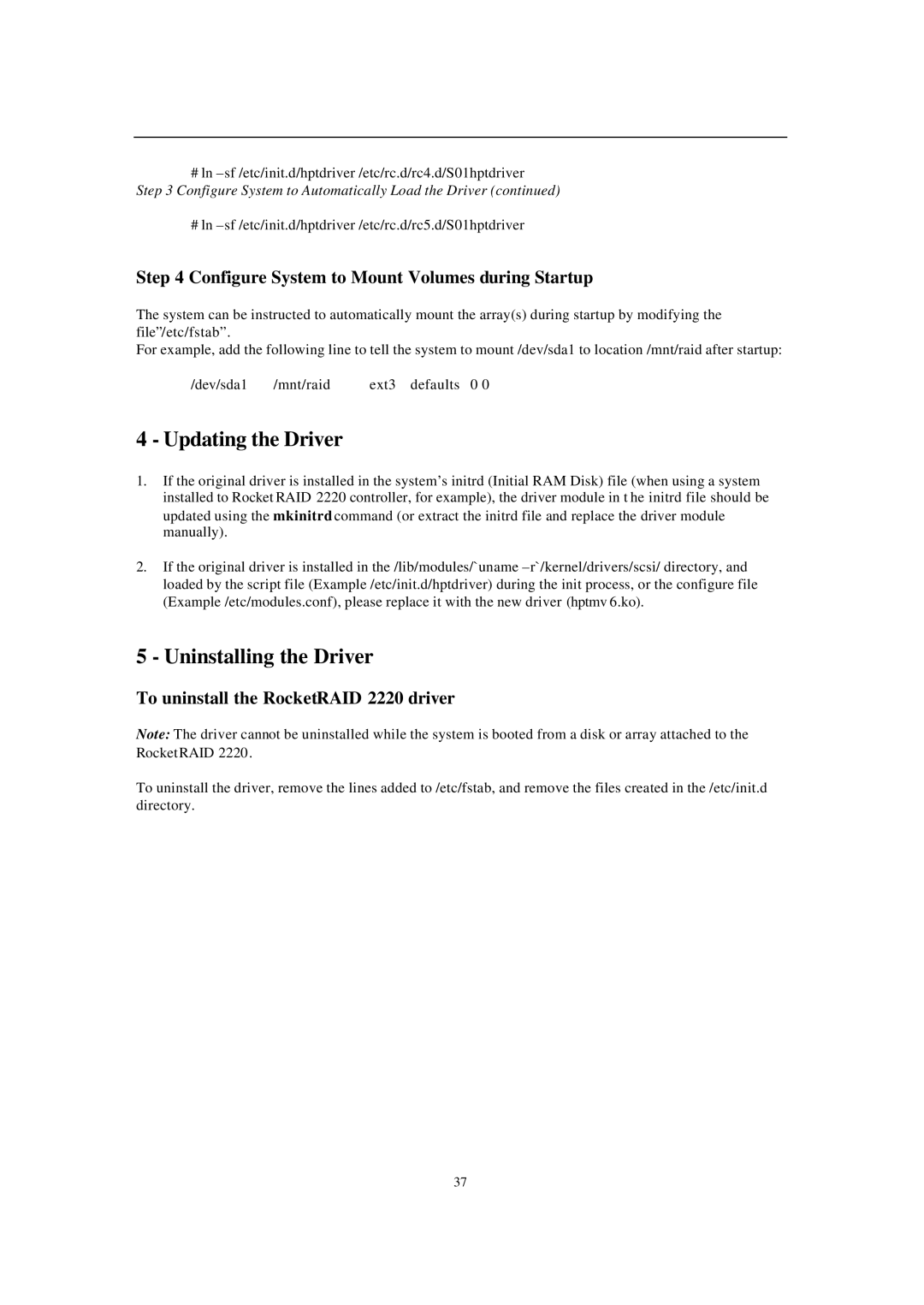# ln
# ln
Step 4 Configure System to Mount Volumes during Startup
The system can be instructed to automatically mount the array(s) during startup by modifying the file”/etc/fstab”.
For example, add the following line to tell the system to mount /dev/sda1 to location /mnt/raid after startup:
/dev/sda1 | /mnt/raid | ext3 defaults 0 0 |
4 - Updating the Driver
1.If the original driver is installed in the system’s initrd (Initial RAM Disk) file (when using a system installed to Rocket RAID 2220 controller, for example), the driver module in t he initrd file should be updated using the mkinitrd command (or extract the initrd file and replace the driver module manually).
2.If the original driver is installed in the /lib/modules/`uname
5 - Uninstalling the Driver
To uninstall the RocketRAID 2220 driver
Note: The driver cannot be uninstalled while the system is booted from a disk or array attached to the RocketRAID 2220.
To uninstall the driver, remove the lines added to /etc/fstab, and remove the files created in the /etc/init.d directory.
37
